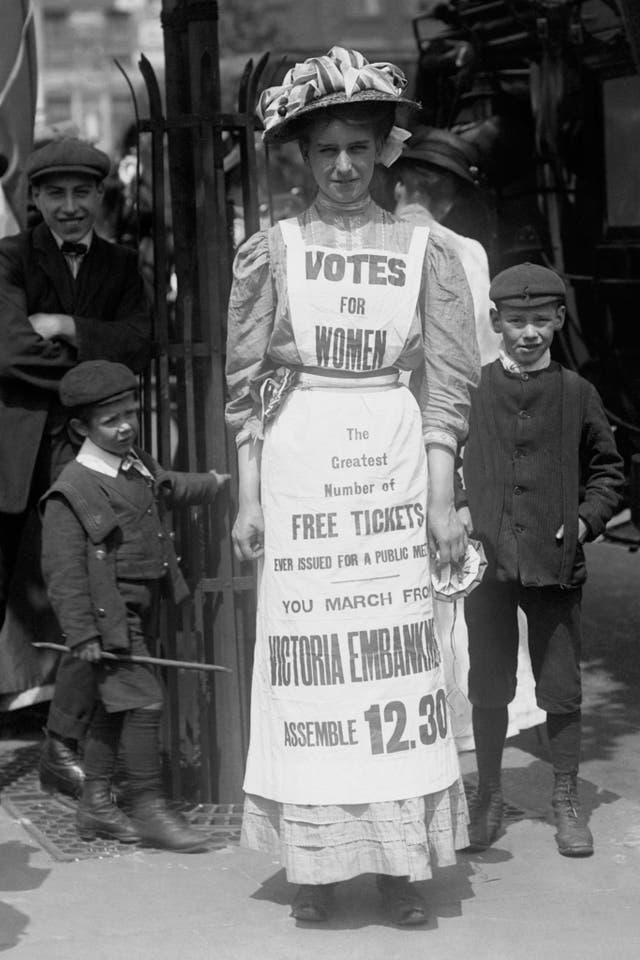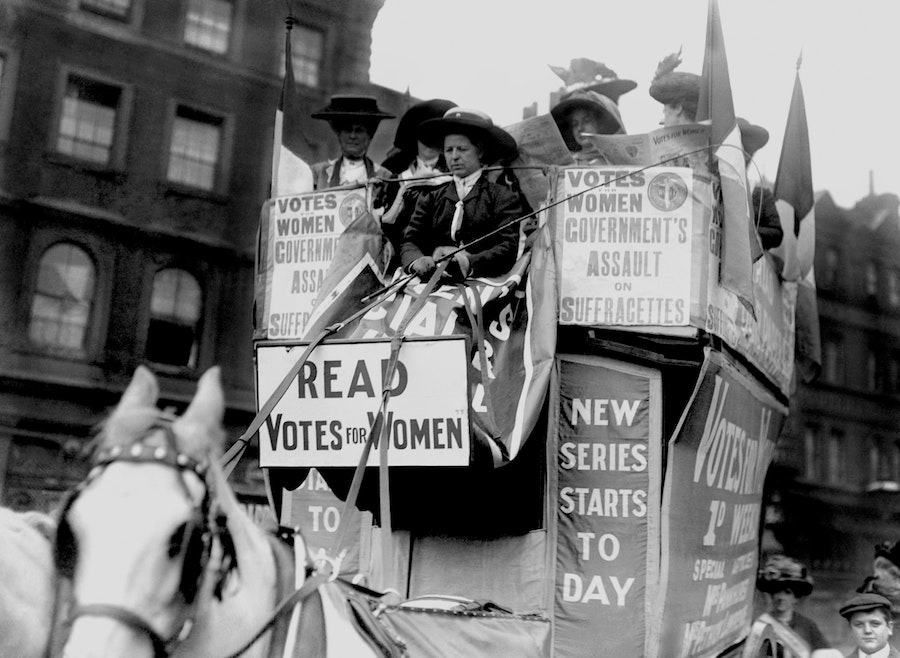Why the votes for women campaign wasn’t really about votes at all
The women’s suffrage movement secured the right for some women to vote in 1918, but then what happened?
More than eight million women were given the right to vote when the Representation of the People Act was passed in February 1918.
However the key part of the campaign was not voting in and of itself, but rather the focus it forced politicians to put on issues that affected women. In the years that followed the act, legislation which affected women’s equality and rights went through Parliament touching on everything from maternal and infant health, to divorce reform and employment.
Political parties embraced women-friendly policies and male candidates changed their leaflets to address the larger electorate, appealing to women as voters rather than just voters’ wives.
The 1918 act gave permission to cast a ballot to women over 30 and with a property qualification – and men over the age of 21 – but it was also about evoking a change in politics which was underpinned by women’s broad interests.

A 50p coin from the Royal Mint highlights the centenary of the Representation of the People Act – for 2018
Krista Cowman, professor of history at the University of Lincoln, said: “The suffrage campaign had been saying since the 1860s it’s not a vote for the sake of the vote, it’s about the vote for affecting other reform.”
The February 6 Act was followed by a second piece of legislation in November setting out that women could stand for election. The Parliament (Qualification of Women) Act however had no age restrictions – a woman aged 21 could stand for parliament, even though she was unable to vote for herself.
A general election took place the following month with women voting for the first time.
Mari Takayanagi, historian and archivist at Parliament, is the joint project manager of the Voice and Vote exhibition, Parliament’s centrepiece for the centenary and which takes place this summer.
“(All political parties) were keen to attract women voters,” she said. “There was a big effort to capture the ‘female vote’.
“MPs had women constituents for the first time. There was not a great deal of reason for them to think about women before, then suddenly almost half of their electorate are women.”

Among the early pieces of legislation was the 1918 Mother and Child Welfare Act which paved the way for maternity clinics, made local authorities responsible for improvements to a mother’s health and put greater emphasis on infant and maternal care.
The 1919 Sex Disqualification (Removal) Act removed obstacles for women to take greater party in public life. They could qualify as lawyers, sit as magistrates and serve on juries. They could compete for civil service jobs alongside men.
A woman could petition for divorce more easily thanks to the 1923 Divorce Act while the 1925 Equal Guardianship Of Children Act put the welfare of the child at its centre. It gave increased rights to mothers in the event of divorce whereas beforehand the child would remain with the father – even if a babe in arms.

A Suffragette housemaid in 1908 during the campaign for the enfranchisement of women
“(Women’s issues) become greater legislative priorities,” said Alex Windscheffel, senior lecturer in modern British history at Royal Holloway and fellow of The Bedford Centre For The History Of Women.
“There’s a raft of legislation in late teens and 1920s which is removing some of the sex inequalities and addressing women’s interests. There’s a greater awareness of women’s interests and that’s reflected in legislation.”
UK Parliament and @RoyalHolloway celebrate 100 years of votes for women with a free online course ‘Beyond the Ballot: Women’s Rights and Suffrage from 1866 to Today’ https://t.co/FdZ4gtjk8O #Suffrage100 #Vote100 #votesforwomen
— Commons Press Office (@HoCPress) January 25, 2018
It was not until the Equal Franchise Act of 1928 that all women over the age of 21 were given the vote, the same as men. And it was 1958 before women could take a seat in the Lords.
“The act doesn’t revolutionise the political culture and system – it doesn’t lead to gender equality – but you see small victories for women,” added Dr Windscheffel.
“The 1918 act is quite limited but it has a knock-on affect. Its effects are still being felt now.
“Once you have women able to stand for Parliament it shows the absurdity of women not being able to take part in civic life.”
The Press Association
Latest posts by The Press Association (see all)
- 3 easy Mary Berry recipes to make this season - November 22, 2024
- In Pictures: Party stalwart kept New Labour in touch with traditional supporters - November 21, 2024
- 6 easy indoor exercises to try this winter – and why they are good for you - November 19, 2024
- Martin Clunes: I can’t afford to retire – I’ve got too many horses - November 19, 2024
- How to avoid plant losses, flowering disappointments and container catastrophes - November 17, 2024





















